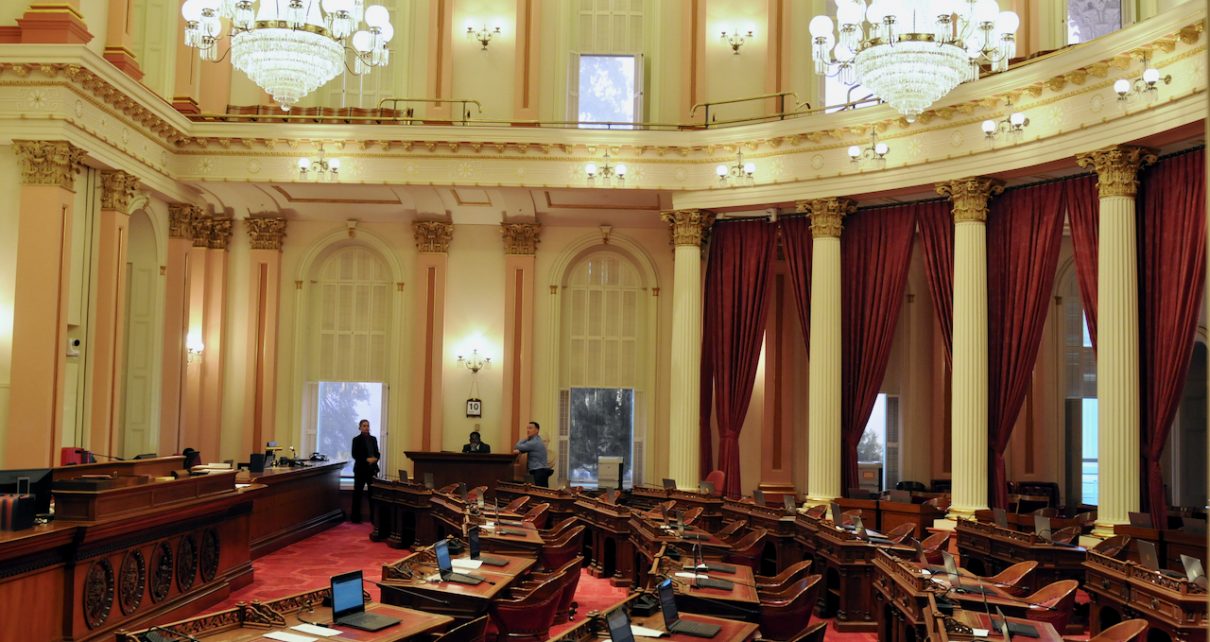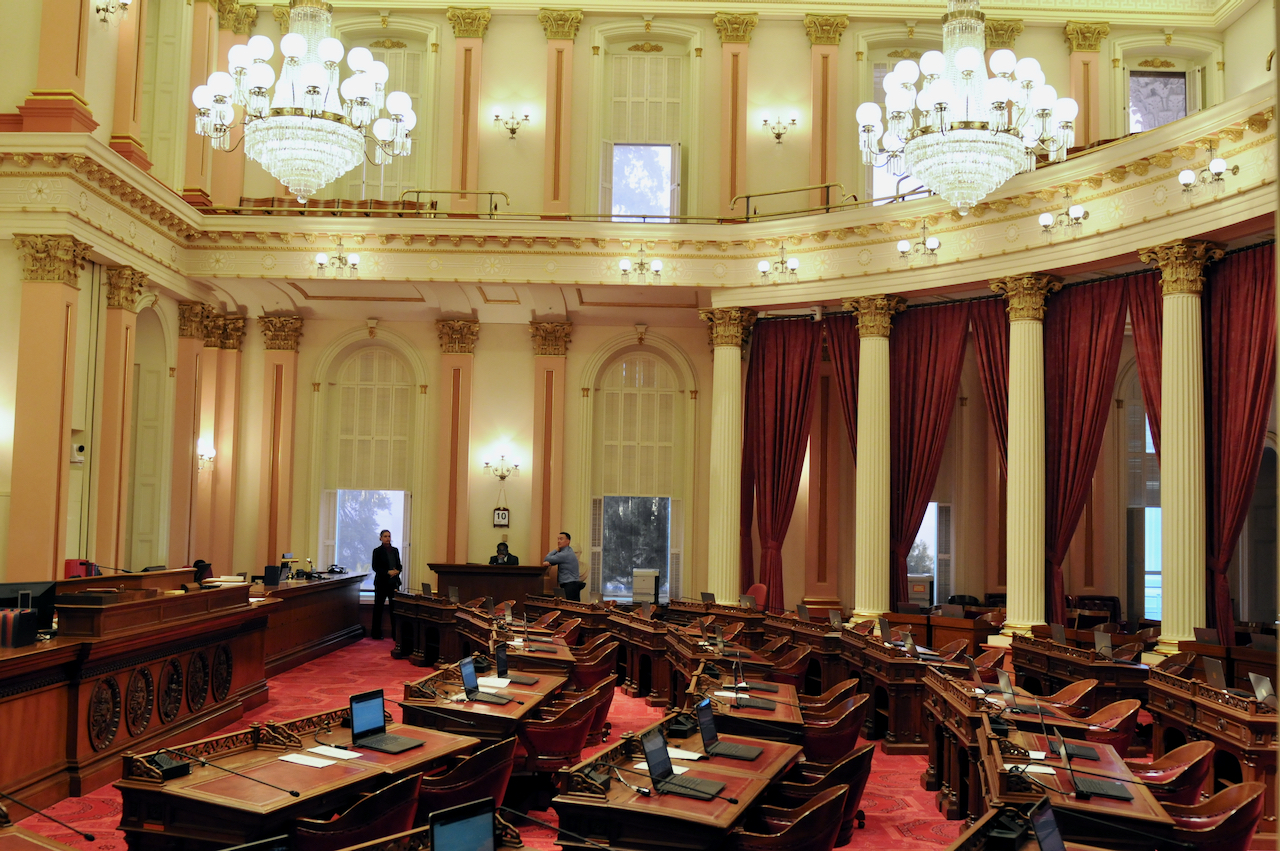
California Senate Chambers. (Photo: Kevin Sanders for California Globe)
Canon of Statutory Construction – Last Antecedent
We start with the presumption that the Legislature drafts its bills carefully and intentionally
By Chris Micheli, October 27, 2022 6:28 am
For purposes of statutory construction, the courts and bill drafters use a series of “canons” to guide them. These include textual canons (intrinsic aids), linguistic presumptions and grammatical conventions, substantive canons, and extrinsic aids. It is impossible to list them all, but there are some common canons, and those are most useful for legislative drafting.
We start with the presumption that the Legislature drafts its bills carefully and intentionally. Because of this presumption, the usual approach of the judicial branch is to narrow statutes rather than expand them, and the courts are less activist in their interpretation.
The last antecedent rule is a doctrine of interpretation of a statute, by which “Referential and qualifying phrases, where no contrary intention appears, refer solely to the last antecedent.” Knowing that explanation may not be helpful, it is a rule of statutory interpretation used by the courts to determine that qualifying words or phrases refer to the language immediately preceding the qualifier, unless common sense shows that it was meant to apply to something more distant or less obvious.
In other words, the Rule of the Last Antecedent provides that a modifier set off from a series of antecedents by a comma should be interpreted to apply to all of the antecedents. Put another way, any qualifying words are to be applied to the words or phrases immediately preceding the qualifying word or words, and are not interpreted as extending to other words.
On a related note, the Serial Comma Rule specifies that, in a series of three items where each is set off by a comma, each item should be viewed as independent of each other. Here is an example: My favorite ice cream is coffee, mint chocolate chip, and vanilla with chocolate sauce. In this example, the phrase “with chocolate sauce” should apply to vanilla ice cream.
Compare that sentence to the following example: My favorite ice cream is coffee, mint chocolate chip, and vanilla, with chocolate sauce. In this example, the phrase “with chocolate sauce” would apply to all three flavors of ice cream.
In order to better address potential problems with lists, a legislative drafter could change the list order, put the qualifier at the front of the list, repeat the qualified throughout, or repeat the proposition. If none of these modifications are made, the Last Antecedent Rule will most likely prevail if a court interprets the statute
- Child Custody Investigations - December 19, 2025
- Health Insurance for Child Support - December 18, 2025
- Sale or Disposal of Unclaimed Property - December 18, 2025




One thought on “Canon of Statutory Construction – Last Antecedent”